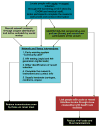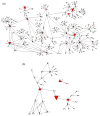A new approach to prevent HIV transmission: Project Protect intervention for recently infected individuals
- PMID: 25244688
- PMCID: PMC4524562
- DOI: 10.1080/09540121.2014.947913
A new approach to prevent HIV transmission: Project Protect intervention for recently infected individuals
Abstract
Past research suggests that as many as 50% of onward human immunodeficiency virus (HIV) transmissions occur during acute and recent HIV infection. It is clearly important to develop interventions which focus on this highly infectious stage of HIV infection to prevent further transmission in the risk networks of acutely and recently infected individuals. Project Protect tries to find recently and acutely infected individuals and prevents HIV transmission in their risk networks. Participants are recruited by community health outreach workers at community-based HIV testing sites and drug users' community venues, by coupon referrals and through referrals from AIDS clinics. When a network with acute/recent infection is identified, network members are interviewed about their risky behaviors, network information is collected, and blood is drawn for HIV testing. Participants are also educated and given prevention materials (condoms, syringes, educational materials); HIV-infected participants are referred to AIDS clinics and are assisted with access to care. Community alerts about elevated risk of HIV transmission are distributed within the risk networks of recently infected. Overall, 342 people were recruited to the project and screened for acute/recent HIV infection. Only six index cases of recent infection (2.3% of all people screened) were found through primary screening at voluntary counseling and testing (VCT) sites, but six cases of recent infection were found through contact tracing of these recently infected participants (7% of network members who came to the interview). Combining screening at VCT sites and contact tracing the number of recently infected people we located as compared to VCT screening alone. No adverse events were encountered. These first results provide evidence for the theory behind the intervention, i.e., in the risk networks of recently infected people there are other people with recent HIV infection and they can be successfully located without increasing stigma for project participants.
Keywords: HIV; acute infection; prevention; recent infection; social networks intervention.
Figures


References
-
- Christopoulos KA, Zetola NM, Klausner JD, Haller B, Louie B, Hare CB, Pilcher CD. Leveraging a rapid, round-the-clock HIV testing system to screen for acute HIV infection in a large urban public medical center. Journal of Acquired Immune Deficiency Syndromes. 2013;62(2):e30–e38. doi: 10.1097/QAI.0b013e31827a0b0d. - DOI - PMC - PubMed
Publication types
MeSH terms
Grants and funding
LinkOut - more resources
Full Text Sources
Other Literature Sources
Medical
Miscellaneous
